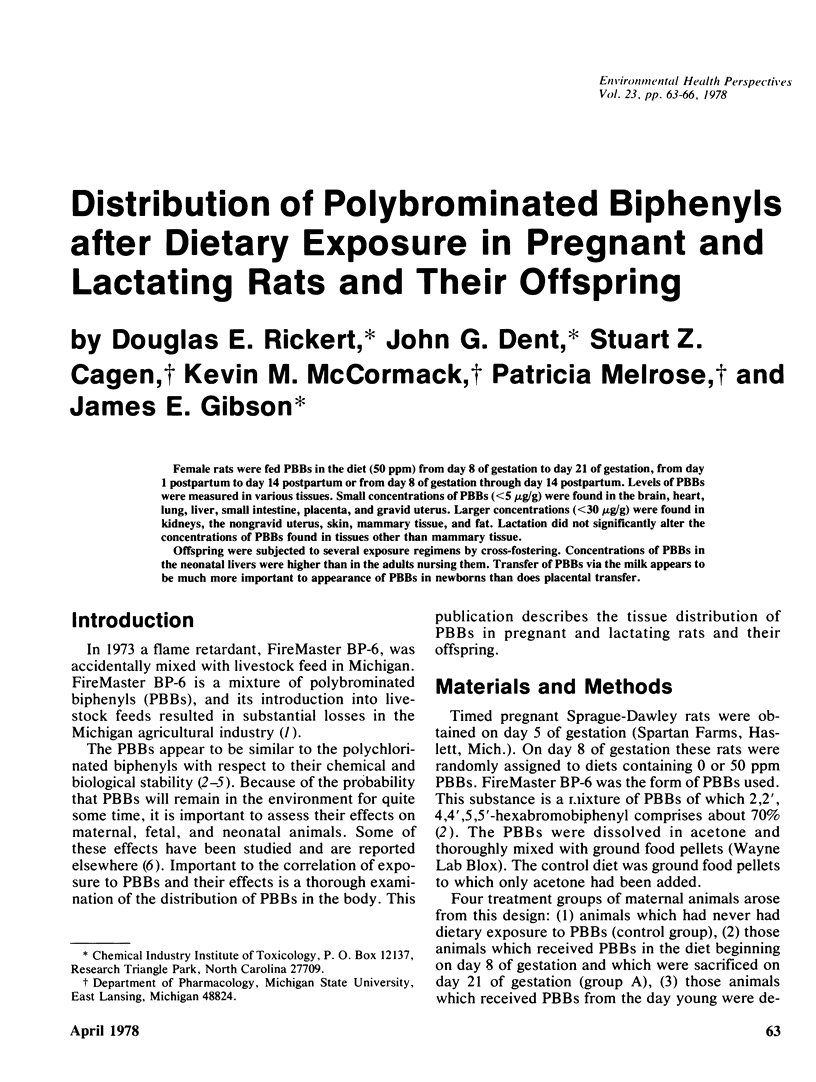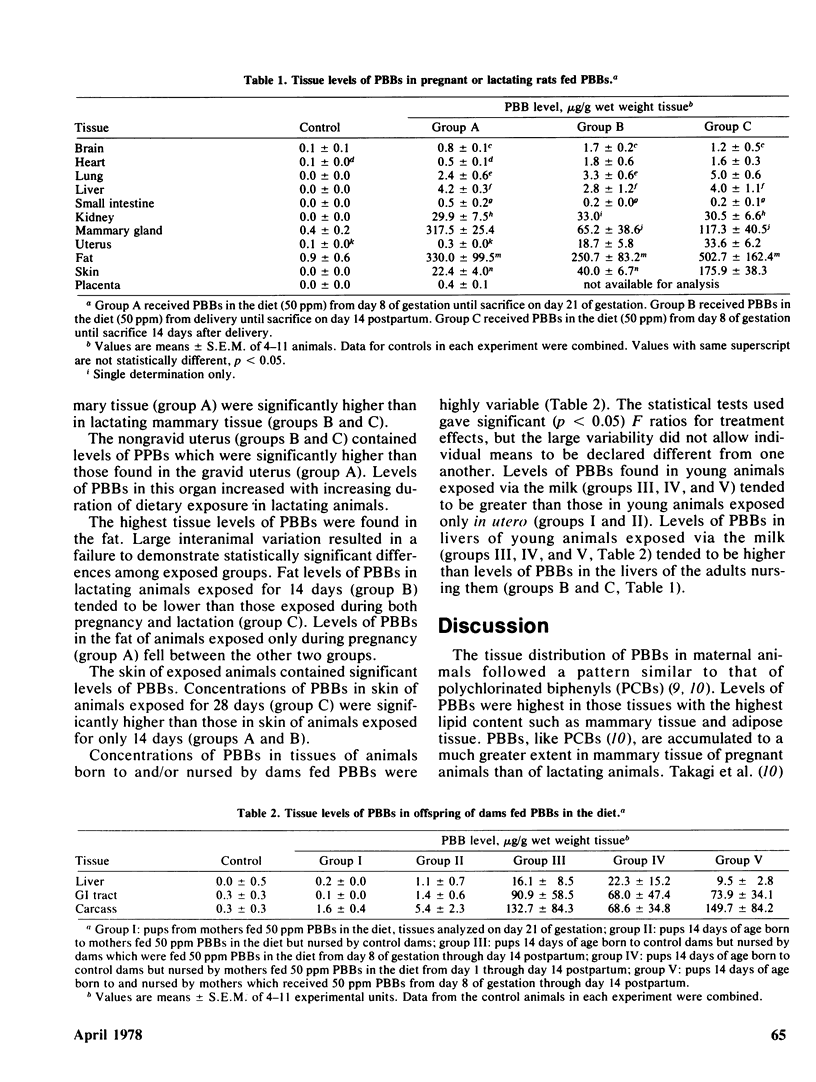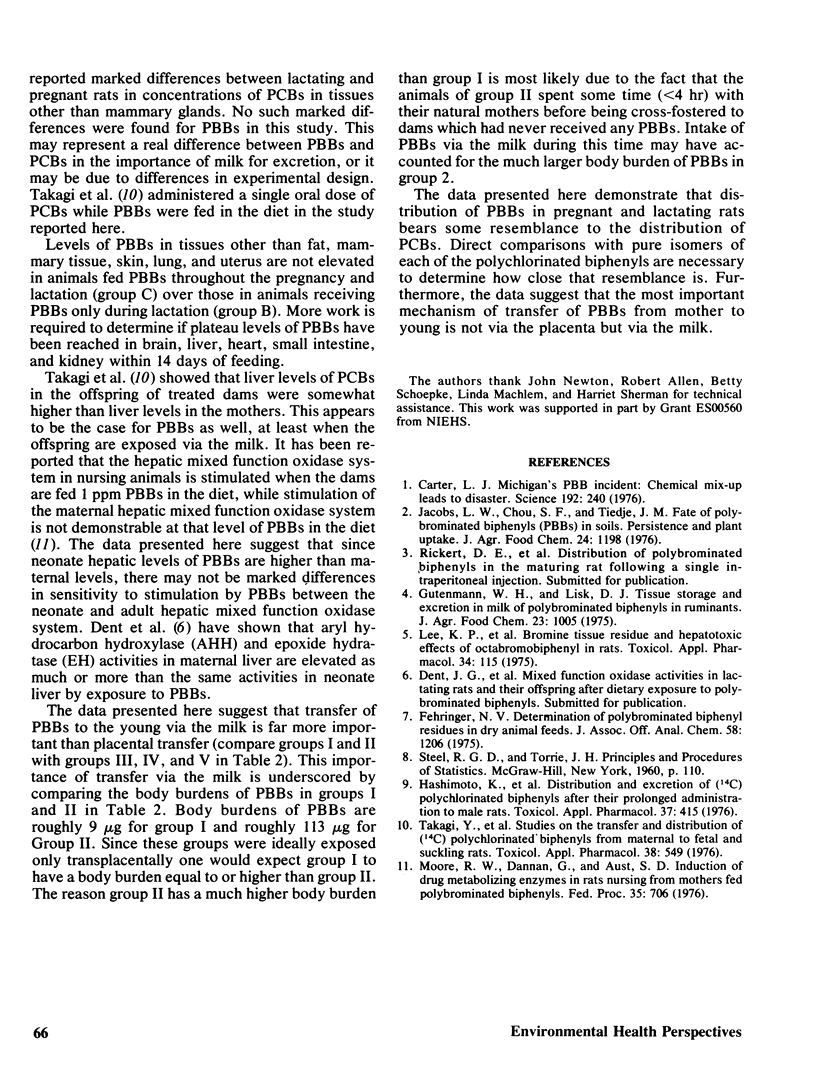Abstract
Female rats were fed PBBs in the diet (50 ppm) from day 8 of gestation to day 21 of gestation, from day 1 postpartum to day 14 postpartum or from day 8 of gestation through day 14 postpartum. Levels of PBBs were measured in various tissues. Small concentrations of PBBs (less than 5 microgram/g) were found in the brain, heart, lung, liver, small intestine, placenta, and gravid uterus. Larger concentrations (less than 30 microgram/g) were found in kidneys, the nongravid uterus, skin, mammary tissue, and fat. Lactation did not significantly alter the concentrations of PBBs found in tissues other than mammary tissue. Offspring were subjected to several exposure regimens by cross-fostering. Concentrations of PBBs in the neonatal livers were higher than in the adults nursing them. Transfer of PBBs via the milk appears to be much more important to appearance of PBBs in newborns than does placental transfer.
Full text
PDF



Selected References
These references are in PubMed. This may not be the complete list of references from this article.
- Carter L. J. Michigan's PBB Incident: Chemical Mix-Up Leads to Disaster. Science. 1976 Apr 16;192(4236):240–243. doi: 10.1126/science.192.4236.240. [DOI] [PubMed] [Google Scholar]
- Fehringer N. V. Determination of polybrominated biphenyl residues in dry animal feeds. J Assoc Off Anal Chem. 1975 Nov;58(6):1206–1210. [PubMed] [Google Scholar]
- Gutenmann W. H., Lisk D. J. Tissue storage and excretion in milk of polybrominated biphenyls in ruminants. J Agric Food Chem. 1975 Sep-Oct;23(5):1005–1007. doi: 10.1021/jf60201a008. [DOI] [PubMed] [Google Scholar]
- Hashimoto K., Akasaka S., Takagi Y., Kataoka M., Otake T. Distribution and excretion of (14C)polychlorinated biphenyls after their prolonged administration to male rats. Toxicol Appl Pharmacol. 1976 Sep;37(3):415–423. doi: 10.1016/0041-008x(76)90203-9. [DOI] [PubMed] [Google Scholar]
- Jacobs L. W., Chou S. F., Tiedje J. M. Fate of polybrominated biphenyls (PBB's) in soils. Persistence and plant uptake. J Agric Food Chem. 1976 Nov-Dec;24(6):1198–1201. doi: 10.1021/jf60208a005. [DOI] [PubMed] [Google Scholar]
- Lee K. P., Herbert R. R., Sherman H., Aftosmis J. G., Waritz R. S. Bromine tissue residue and hepatotoxic effects of octabromobiphenyl in rats. Toxicol Appl Pharmacol. 1975 Oct;34(1):115–127. doi: 10.1016/0041-008x(75)90180-5. [DOI] [PubMed] [Google Scholar]
- Takagi Y., Otake T., Kataoka M., Murata Y., Aburada S. Studies of the transfer and distribution of [14C]polychlorinated biphenyls from maternal to fetal and suckling rats. Toxicol Appl Pharmacol. 1976 Dec;38(3):549–558. doi: 10.1016/0041-008x(76)90186-1. [DOI] [PubMed] [Google Scholar]


